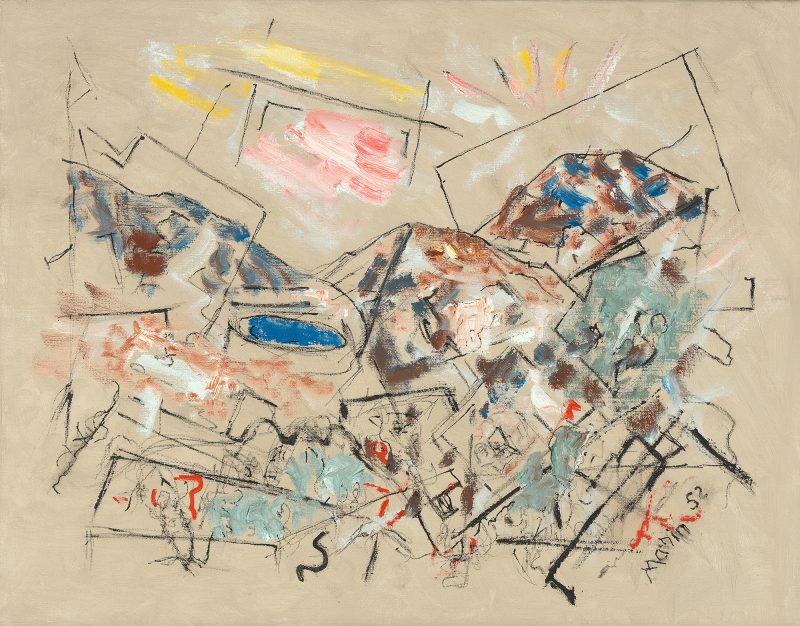
Tunk Mountains
Marin, John
1952
Artwork Information
-
Title:
Tunk Mountains
-
Artist:
Marin, John
-
Artist Bio:
American, 1870–1953
-
Date:
1952
-
Medium:
Oil on canvas
-
Dimensions:
22 x 28 1/8 in.
-
Credit Line:
Wichita Art Museum, Roland P. Murdock Collection
-
Object Number:
M114.53
-
Display:
Not Currently on Display
About the Artwork
Marin painted Tunk Mountains near the end of a long and successful career. In 1950 the artist was awarded honorary Doctor of Fine Arcs degrees from both Yale University and the University of Maine. The same year Marin was also honored with a retrospective exhibition at the Venice Biennale, in the company of the younger American artists Willem de Kooning, Arshile Gorky and Jackson Pollock. It seems appropriate for Marin to have been shown with these Abstract Expressionists, since even though his work never abandoned references to nature, its gestural freedom predicted the spontaneous brushwork of the younger painters. The liberated quality of Marin’s late work suggests that painting had become almost second nature to him. “As for painting—I’ve given that up— “Marin wrote in 1943, “I just tie a brush to my fingers and let that old silly brush do the painting.”1
Marin did not seriously pursue oil painting until the 1930s. At this time, he enthusiastically explored the rich impasto surface easily attained in oils, and so different from the flatter texture of his usual working medium of watercolor. Bold surface texture, combined with calligraphic line and rhythmic composition, characterize Tunk Mountains. The subject, a mountain range in Maine, was one Marin painted on numerous occasions during the 1940s and 1950s.
For the Wichita painting Marin used a commercially primed canvas, to which he applied a putty-colored base layer of paint. Over this base, he set down the strong black lines of the composition, which seem to push out of the canvas towards the viewer. These calligraphic black marks dominate the painting, framing, and defining forms, and establishing a zigzag sensation of compositional movement. Complementing the motion of the lines are thick dabs of blue, green, and red pigment.
Painted a year before Marin’s death, the lively Tunk Mountains exemplifies the artist’s optimistic attitude towards life. Marin’s own words express his positive outlook most clearly in his response to the existential angst driving the work of many of the younger generation of artists:
“Shakespeare didn’t give us tragedies only; he gave us comedies as well. I’d like the modern artists to think about that—there’s room in life for both and I’d like to see them restore the balance and give us something a little cheerful. The sun is still shining and there’s a lot of color in the world. Let’s see some of it on canvas.”2
1. John Marin, letter to Alfred Stieglitz, 29 September 1943, quoted in Sheldon Reich, John Marin, Part 1: A Stylistic Analysis (Tucson: University of Arizona Press, 1970), 236.
2. John Marin quoted in “Noted Artist Abhors All ‘isms’except ‘Real’ism in Art”, Palisadian, December 1947, in Ruth Fine, John Marin (New York: Abbeville Press, 1990), 282.